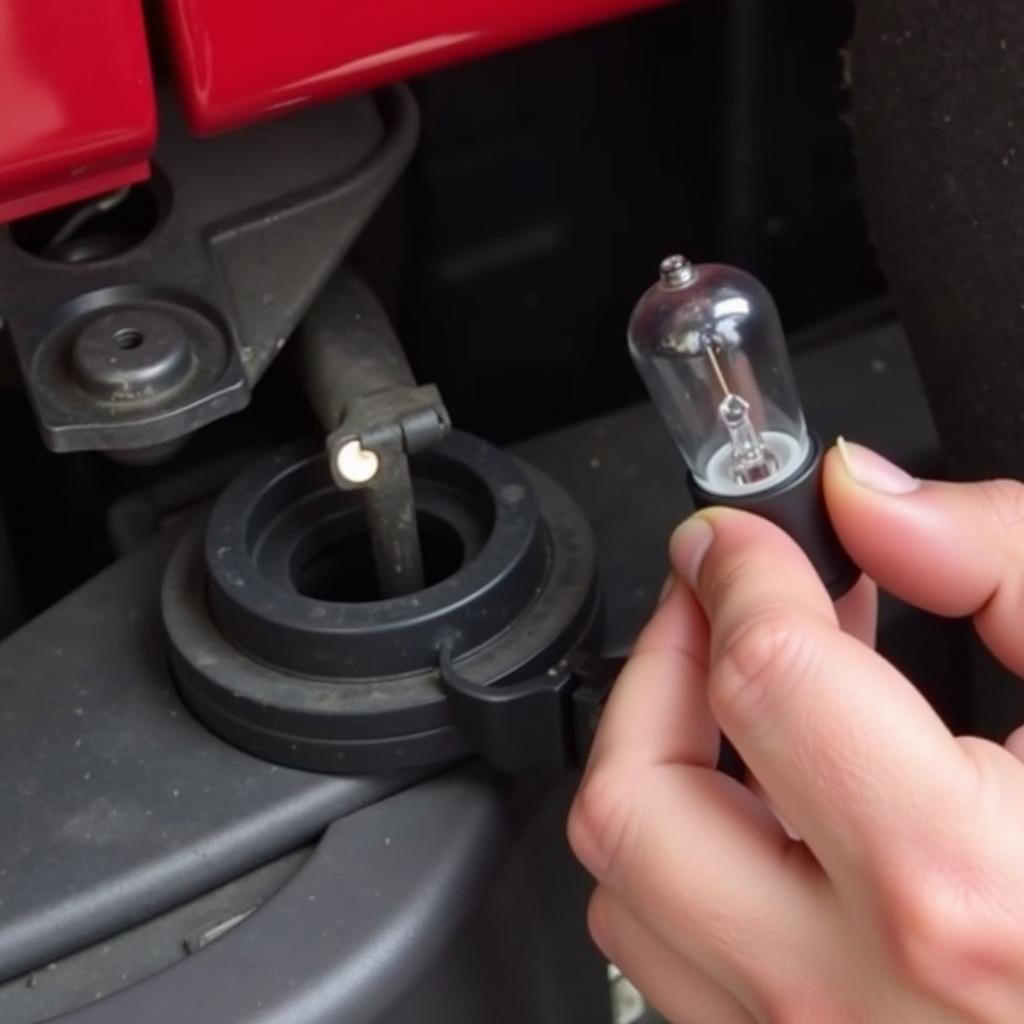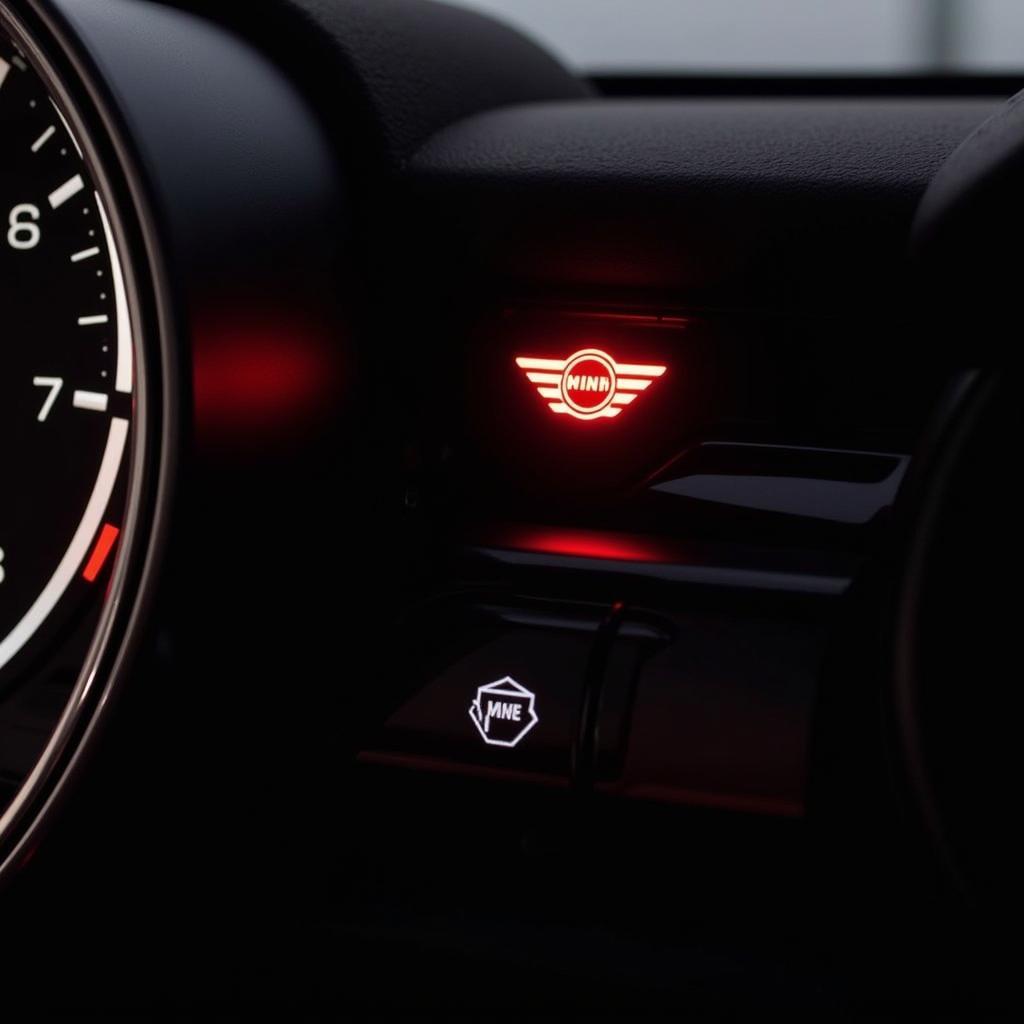A check engine light can be triggered by a multitude of issues, and a failing battery is often overlooked as a potential culprit. While the connection might not seem obvious, a bad battery can disrupt the delicate electronic systems in your car, leading to that dreaded illuminated warning. This article explores the intricate relationship between a bad battery and the check engine light, providing valuable insights into diagnosis and solutions.
How a Bad Battery Can Trigger the Check Engine Light
A healthy battery provides a stable voltage to the car’s computer, ensuring proper function of various sensors and systems. When the battery weakens, voltage fluctuations occur, impacting sensor readings and potentially triggering error codes. A low voltage can cause the car’s computer to misinterpret signals, perceiving them as malfunctions in other components. This can lead to a check engine light, even if the underlying problem is simply a dying battery. For instance, a weak battery might cause erratic readings from the oxygen sensor, leading the computer to believe there’s a problem with the engine’s air-fuel mixture. Similar to automotive battery drain, a dying battery can be a silent saboteur, manifesting its problems through seemingly unrelated symptoms.
Diagnosing a Bad Battery as the Cause of the Check Engine Light
Identifying a bad battery as the root cause of a check engine light requires a systematic approach. Start with the basics: check the battery terminals for corrosion or loose connections. Corrosion can impede the flow of current, while loose connections can lead to intermittent power supply, mimicking sensor malfunctions. Next, have the battery tested using a multimeter or a dedicated battery tester. This will determine the battery’s voltage and its ability to hold a charge. If the battery tests weak, it’s a strong indicator that it might be the culprit behind the check engine light. Like the situation with a chrysler 200 dead battery, a proper diagnostic process is vital.
What Happens When the Check Engine Light Comes on Due to a Bad Battery?
When a bad battery causes the check engine light to illuminate, the car’s computer stores a diagnostic trouble code (DTC). These codes pinpoint the specific area where the computer detected a fault. However, with battery-related issues, these codes can be misleading, pointing towards sensor or component problems when the real culprit is the failing battery. Connecting an OBD-II scanner to the car’s diagnostic port allows you to retrieve these codes. Interpreting these codes requires careful consideration of the battery’s condition. For instance, a code related to an oxygen sensor might be triggered by low voltage from the battery rather than a faulty sensor. This underlines the importance of considering the battery as a potential source of the problem when diagnosing a check engine light. This relates to scenarios where my car battery keeps going flat and the check engine light appears.
Can a New Battery Fix the Check Engine Light?
Replacing a failing battery often resolves the check engine light issue. A new battery provides the stable voltage required for proper sensor function, eliminating the erroneous readings that triggered the light in the first place. After installing a new battery, it’s crucial to clear the existing DTCs using an OBD-II scanner. This resets the car’s computer and allows it to monitor the systems with the correct voltage supplied by the new battery. However, if the check engine light persists after battery replacement and code clearing, it indicates a separate underlying issue that requires further diagnosis. This highlights the importance of a thorough diagnostic process even after addressing the battery. The issue can sometimes be as simple as a remote car starter draining battery, so checking for parasitic draws is essential.
Preventing Battery-Related Check Engine Light Issues
Maintaining a healthy battery is crucial for preventing check engine light issues. Regular battery testing and cleaning the terminals are essential preventative measures. Ensure the charging system is functioning correctly to maintain the battery’s optimal charge. Extreme temperatures can significantly impact battery life, so taking precautions in hot and cold weather can extend its lifespan. By proactively addressing battery health, you can minimize the risk of voltage fluctuations and the associated check engine light headaches. You might even prevent a situation where my car battery died for no reason.
Conclusion
A check engine light for a bad battery is a common yet often misdiagnosed issue. Understanding the connection between a failing battery and the car’s electronic systems is crucial for accurate diagnosis and effective solutions. By following the diagnostic steps outlined in this article and implementing preventative measures, you can avoid unnecessary repairs and keep your car running smoothly. Regularly checking your battery health and addressing any issues promptly can save you time, money, and frustration.
FAQ
-
Can a bad alternator cause a check engine light? Yes, a failing alternator can cause voltage fluctuations and trigger the check engine light.
-
How long can I drive with the check engine light on due to a bad battery? It depends on the severity of the battery issue. It’s best to address the problem promptly to avoid further complications.
-
Will jump-starting a car with a bad battery reset the check engine light? No, jump-starting a car will not reset the check engine light. The underlying issue needs to be resolved.
-
What other symptoms can a bad battery cause? A bad battery can cause dim headlights, slow cranking, and electrical malfunctions.
-
Can a bad battery damage the car’s computer? While unlikely, prolonged exposure to low voltage from a failing battery can potentially damage sensitive electronic components.
-
How often should I have my car battery tested? It’s recommended to have your car battery tested every six months, especially during extreme weather conditions.
-
Can I replace a car battery myself? Yes, with the right tools and precautions, you can replace a car battery yourself. However, it’s always advisable to consult your car’s manual.


